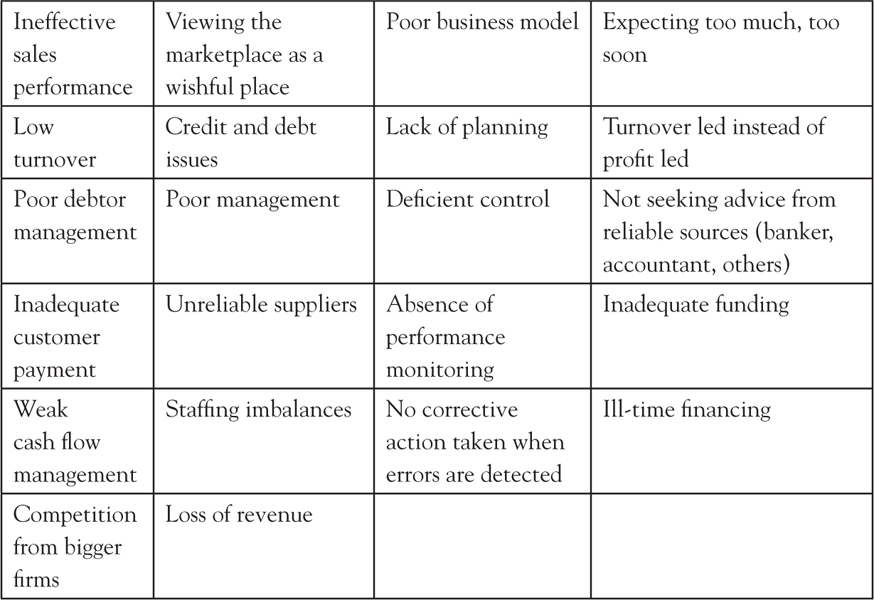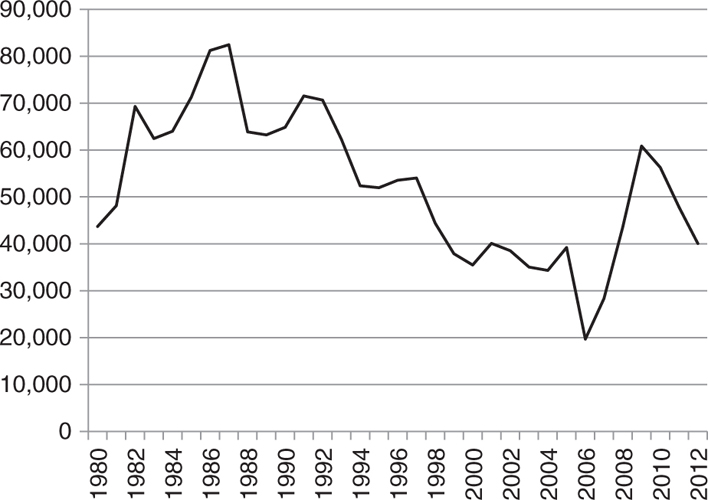CHAPTER 22
Do Not Quit Your Day Job
(Buying a Lottery Ticket Is Not Winning the Lottery)
Vignette: The Perfect Business Plan
“This project cannot fail,” Don said to me when presenting his business plan justifying his need for venture capital.
Don was convinced that his plan would work. He spent several years developing it. He patented all the major designs of his manufacturing process. He consulted several experts in the field who agreed that his ideas were sound and well presented. The technology was readily available. The market was in need of this new way of using energy. The only drawback was the lack of the initial capital investment to start production.
Don spent quite some time preparing his presentations, brochures, prospectuses, and even a website. Yet, he could not secure the funding required.
Why do most entrepreneurs fail to raise the capital they need to kick-start their infallible venture?
Entrepreneurs and investors see the future differently. Entrepreneurs visualize a product in need of a market. Investors look for a market in need of a product.
Investors expect accurate historical and projected business and financial data, objective company valuation, and realistic funding goals. They would like to know the justification for the use of their funds and their exit strategy.
Entrepreneurs often forget that “the devil is in the details.”
When a business idea is ripe for the picking, some potential customers show interest in the products or services, and family and friends provide encouragement in the form of seed capital, the temptation is to go full steam ahead.
How else can an entrepreneur succeed if not by giving it all one can give—knowledge, resourcefulness, time, money, and effort?
Some entrepreneurs just go for it. Very few succeed.
Business news proudly describes the successful ventures, rarely the failed ones. How many failed business ventures have occurred before one successful business venture emerges?
What you see is what you get.
Some Business Failure Statistics
Industry Canada in its 2016 Key Small Business Statistics report states that about 96 percent of small firms (1 to 99 employees) that enter the marketplace survive for 1 full year, 85 percent survive for 3 years, and 70 percent survive for 5 years.i
For more detailed information on business insolvencies in Canada in 2017, see the Office of the Superintendent of Bankruptcy Canada report at http://www.ic.gc.ca/eic/site/bsf-osb.nsf/eng/br03879.html
Micro-enterprises (businesses with one to four employees) have a 70 percent survival rate compared with 67 percent of other small businesses.90
Some commercial research firms collect financial data on businesses (and individuals) and sell it to lenders and other interested parties, for example, Dun & Bradstreet,91 Robert Morris Associates,92 Financial Research Associates,93 and Equifax.94
For information about U.S. firms, one can check the U.S. Census Bureau’s Characteristics of Business Owners Database at http://www.census.gov.
What happens when we analyze Canadian and U.S. business bankruptcy statistics for the period from 1980 to 2012?95
The U.S. bankruptcies chart (Figure 22.1) shows a climbing number of bankruptcies from 1980 to 1987, followed by a relatively stable number of bankruptcies for the period 1988 to 1990; the period from 1991 to 2006 shows a sharp decline: from a high of 71,549 in 1991 to a low of 19,695 in 2006. The global economic crisis that started in 2007 was reflected in a sharp increase in bankruptcies thereafter.
Figure 22.1 American annual business bankruptcy filings
Source: Adapted from American Bankruptcy Institute.
On the other hand, the Canadian business bankruptcies chart (Figure 22.2) shows a steady decrease in business bankruptcies during the period from 1999 to 2006. The global economic crisis following that period affected Canadian businesses too.
Figure 22.2 Canadian annual business insolvency rates
Source: Adapted from Industry Canada.
This is important information for would-be entrepreneurs wanting to start a business because it shows a declining trend in bankruptcies.
Those numbers can be interpreted in different ways. In Canada, the subprime mortgage crisis did not have the same effect on business as it did in the United States. This might explain the different trends in business bankruptcies in both countries.
Nevertheless, the Canadian pattern is a declining one.
I prefer to choose an optimistic interpretation rather than a pessimistic one. Therefore, I suggest that, in Canada, business-savvy entrepreneurs who know how to maintain a business in operation are increasing.
According to the United States Small Business Administration website, 66 percent of new businesses survive for at least 2 years and 44 percent survive up to 4 years after their inception.96
Why Do Many Small Businesses Fail?
Most new companies do not fail because of a bad business idea or a lack of start-up capital. If the business ideas were wrong, the company would probably not even start. If start-up working capital were missing, the business venture would also be prevented from starting.
Why some companies fail and why some succeed is still a matter of debate, although some common mistakes can sink a company in no time.
According to Statistics Canada, the main reason for failure is inexperienced management. Managers of bankrupt firms do not have the experience, knowledge, or vision to run their businesses.
The other two most common reasons are weak financial management and poor marketing capabilities.
Here is a list of some of the most common causes leading to business failure:
• Poor management (suggested by most researchers)
• Undercapitalization or inadequate capital structure (second most often-cited reason).
These two causes are followed by (not in any particular order):

The lack of experience of owners in managing all aspects of a business at the same time is cited most often as the primary reason for the high failure rate of small and recently established firms. A business needs to be kept in balance even when it is growing rapidly.
Other common faults cited in literature are inefficient planning, which yields unfavorable execution of business objectives, and inadequate funding, which threatens the ability of businesses to grow, whereas bad marketing methods cause unfavorable sales.
Most of these reasons leading to business failure are preventable. The use of outside or professional help can mitigate the challenges new entrepreneurs face and improve the decision-making process they tend to apply, especially in a crisis-management environment.
While poor management is cited most frequently as the primary reason for business failure, inadequate or ill-timed financing is a close second. Most small- or growth-stage businesses use limited equity financing. As with debt financing, additional equity often comes from nonprofessional investors such as friends, relatives, employees, customers, and even suppliers. Knowing how to access those types of funds can assist starting businesses in raising essential capital for sustainability and growth.
Top 10 Reasons Why Businesses Faili
Overexpansion
The desire to be the first to market with a new product, taking on added overhead, and the need to demonstrate revenue growth to anxious investors can all induce businesses to overextend themselves financially. Rather than head down this path, start with realistic goals and allow yourself to grow as needs dictate. Let your revenue, not pie-in-the-sky projections, dictate your expansion plans.
Poor capital structure
Look at the businesses that fail, and you’ll find that many of them took on too much debt. Learn to pay strict attention to your finances and keep careful records of all money coming in and going out.
Overspending
Many start-ups spend their seed money before cash has begun to flow in. If you’re just starting out in business, seek out seasoned veterans to advise you prior to making big financial commitments.
Lack of reserve funds
You need to anticipate market fluctuations, uncontrollable costs like energy rate increases, materials, labor, natural disasters, and the like. Make sure you protect your investment and keep enough reserve cash to carry you through market downtrends and seasonal slowness.
Bad business location
Don’t let a cheap lease tempt you into opening your doors in the wrong neighborhood if your gut is telling you it is not right. Key factors to consider include competition (how many other similar businesses are located nearby?) and accessibility (Is the area well served by freeways, public transportation, and foot traffic?).
Poor execution and internal controls
Poor customer service, accounting controls, and employee incompetence can all combine to bring down the business. Make sure you and your employees place a premium on customer service to generate repeat business, establish protocols for how tasks should be accomplished, and remain on top of your finances.
An inadequate business plan
Your business plan is your blueprint for success. A well-thought-out business plan forces you to think about the future and the challenges you’ll face. It also forces you to consider your financial needs, your marketing and management plans, your competition, and your strategy for coming out on top. Plan properly. Plan continually.
Failure to change with the times.
The only constant in business is change. The ability to recognize opportunities and be flexible enough to adapt to changing times is a key ingredient to surviving and even prospering in the toughest business climate. Therefore, learn how to wear multiple hats and to generate new interests and your areas of expertise.
Ineffective marketing and self-promotion
Customers cannot walk through your front door if they don’t know you are there. Learn how to advertise cost effectively and promote your business through tried-and-true methods like direct mail, ads in local newspapers, websites, and blogs or even by sponsoring a local little league team.
Underestimating the competition.
Consumer loyalty doesn’t just happen; you have to earn it. If you do not take care of your customers, your competition will. Watch your competition as carefully as you do your own employees.97
Lessons Learned—Do Not Give Up Your Day Job
Thinking of going into business on your own? First answer the question, Why? Knowing this answer will support your decision to become an entrepreneur and justify the journey you will be embarking on.
How do you avoid business failure when starting a small business? By planning ahead.
Give your new business venture a fighting chance by building on others’ experience.
To err is human, but to persist (in the mistake) is diabolical.ii
ihttp://www.ic.gc.ca/eic/site/061.nsf/eng/h_03018.html#point2-3
iGoogling “Top 10 Reasons Why Businesses Fail” returns more than 60 million results! My favorite one is: http://www.monitis.com/blog/top-10-reasons-small-businesses-fail-and-what-you-can-do-about-it
ii Translated from Seneca, a Roman philosopher who lived at the start of the new Christian era. He is quoted saying, “Errare humanum est, sed perseverare diabolicum.”


